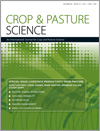A key goal of temperate pasture management is to optimise nutritive value and production. The influence of individual components such as irrigation, nitrogen (N) fertiliser, and grazing interval and intensity has been well researched, yet conjecture remains regarding practices that optimise pasture nutritive value, largely because interactions between inputs and grazing management have not been quantified. A 2-year, split-split-plot experiment was undertaken to investigate these interactions in a perennial ryegrass (Lolium perenne L.) dominant pasture at Elliott, Tasmania. Irrigation treatments (rainfed or irrigated) were main plots and defoliation intervals (leaf regrowth stage: 1-, 2- or 3-leaf) were subplots. Defoliation intensity (defoliation height: 30, 55 or 80 mm) and N fertiliser (0, 1.5 or 3.0 kg N/ha.day) were crossed within sub-subplots. Herbage samples were collected from each plot four times during the experiment and analysed for concentrations (% dry matter, DM) of neutral detergent fibre (NDF), acid detergent fibre (ADF) and crude protein (CP). Metabolisable energy (ME) concentration (MJ/kg DM) was estimated from these values. ME concentration decreased as defoliation height and interval increased for all time points except during winter. Crude protein concentration increased with increasing N fertiliser applications in the plots defoliated at the 1-leaf stage, but only as N applications increased from 1.5 to 3.0 kg N/ha.day for the plots defoliated at the 2- and 3-leaf stages. As N application rates increased from 0 to 1.5 kg N/ha.day, plots defoliated at the 3-leaf stage had greater increases in NDF concentration than plots defoliated at the 1-leaf stage, except during spring. As defoliation height and interval increased, ADF concentration increased in both spring and summer. Although defoliating at frequent intervals (1-leaf stage) and lower heights (30 mm) produced pasture of marginally higher nutritional value, these benefits are mitigated by the previously established, negative consequences of lower pasture yield and poor pasture persistence. Consequently, grazing management that maximises pasture productivity and persistence (i.e. defoliation between the 2- and 3-leaf regrowth stages to a height of 55 mm) should be applied to perennial ryegrass pastures irrespective of input management.
How to translate text using browser tools
13 November 2017
Quantifying the interactions between defoliation interval, defoliation intensity and nitrogen fertiliser application on the nutritive value of rainfed and irrigated perennial ryegrass
K. G. Pembleton,
R. P. Rawnsley,
L. R. Turner,
R. Corkrey,
D. J. Donaghy
ACCESS THE FULL ARTICLE

Crop and Pasture Science
Vol. 68 • No. 12
December 2017
Vol. 68 • No. 12
December 2017
intensive pasture production
pasture-based dairy systems




